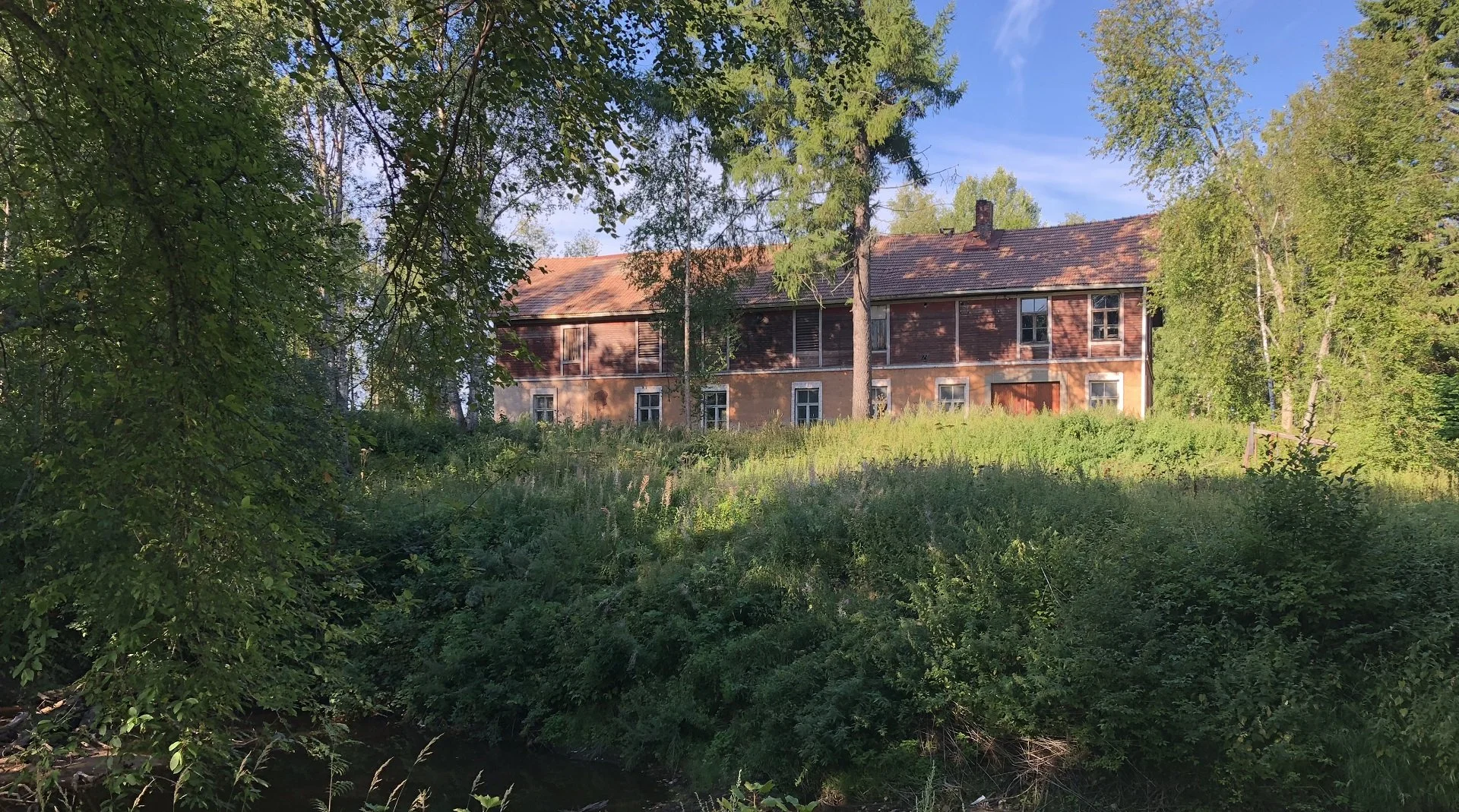
Tyrnävä Leather Factory


Tyrnävä Leather Factory
Standing proudly on the riverbank, the historic Tyrnävä Leather Factory, Nahkuri, together with its adjacent residential buildings and the nearby shoe factory, forms a remarkable ensemble that tells the story of Tyrnävä’s industrial past.
The leather factory was founded in the early 1900s by tanner Kaakinen. Between 1916 and 1933, it was owned by the Tyrnävä Cooperative Bank, after which it remained in the hands of the master tanner Salmenhaara and his son until 1955.
At the factory, hides brought in by local villagers were tanned and turned into supple leather, which the neighboring shoe factory transformed into traditional lapikas boots. The lower floor of the factory once housed the “wet room,” where hides were soaked in round wooden vats and greased on sturdy tables. Upstairs, the leather was dried and polished to perfection.
The tanning process relied on willow bark collected and sold to the factory by local residents—several thousand kilos every summer. Only in the final vat, in the strongest solution, was imported “kooprakko” (quebracho extract) used to achieve the finest finish.
Architecturally, the leather factory is a two-story building made partly of brick and partly of timber. Originally heated by stoves, the building was upgraded in the 1920s with a central steam-heating system. A boiler room extension was added to the south end, built in concrete. The upper floor’s northern section includes a room with log walls and a wooden ceiling, while the rest of the space is an attic with timber trusses and partition walls.
In the 1970s and 1980s, the old factory served a new purpose as the local school’s woodworking and metal workshops. During this period, many interior changes were made, and the original tanning vats were removed.
During Kaakinen’s time, a small one-story house stood in the factory yard. In the 1920s, during the Cooperative Bank era, a new two-story residence was built. After the wars, the old house was raised, and the two buildings were connected into an L-shaped complex. The lower section remained inhabited until the 2010s, though the taller wing has since settled and shows signs of age.
Sources:
Council of North Ostrobothnia (2015): Tyrnävä – Built Cultural Environments of North Ostrobothnia
Mäkiniemi, Kaisa (ed.) (2018): Tyrnävän nahkatehdas, p. 351, Kymmenen virran varrelta – Changing Cultural Landscapes of North Ostrobothnia
